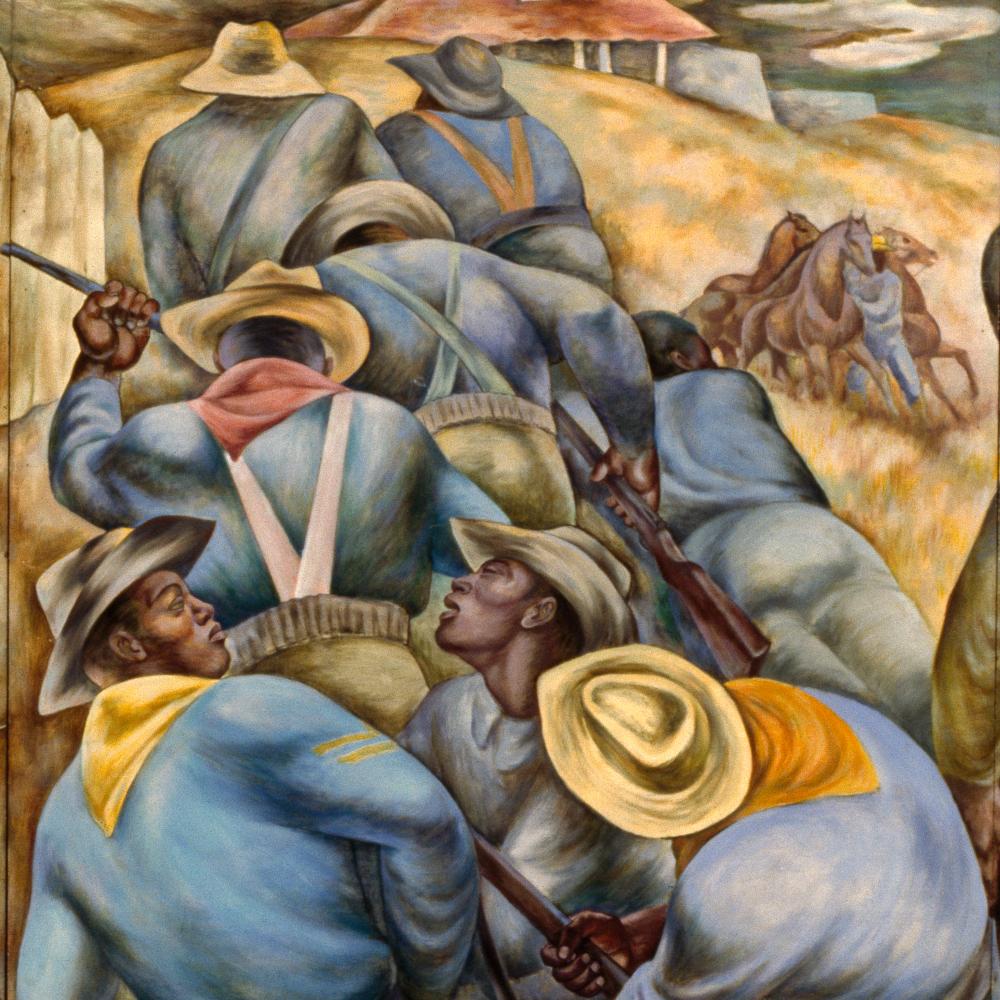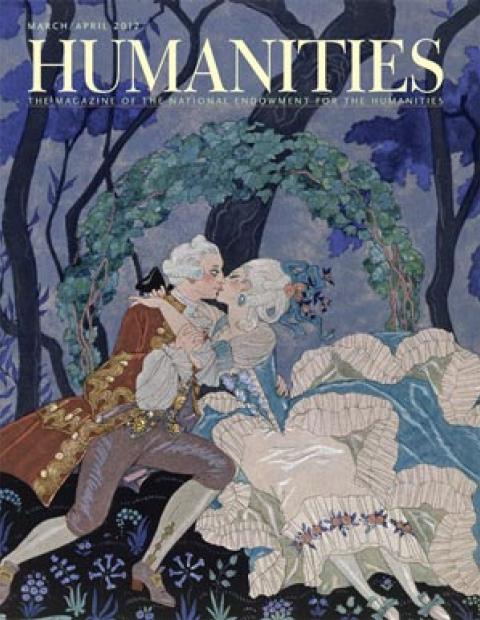When after nearly forty-nine years as a U.S. territory, Arizona became the 48th—and the last of the contiguous states—to enter the Union on Feb. 14, 1912, Arizona’s first governor commissioned cowpunch-turned-artist Lon Megargee to create fifteen murals for the new State Capitol.
Megargee traveled the state for inspiration, choosing themes that represented Arizona’s people and landscapes. The murals, which still hang in the Arizona State Capitol, depict Native culture, early Spanish colonization, the Grand Canyon, mining, and the “five Cs” of Arizona industry—copper, cattle, citrus, climate, and cotton.
Megargee’s story and the story of Arizona artists from across the state over the past hundred years were featured on “Hearing the Century: Voices of Arizona’s Arts Past and Present,” which aired twenty three-minute segments during February on KBAQ 89.5 FM to commemorate Arizona’s centennial. The series is available as podcasts on the KBAQ website, along with other resources and an online forum.
“It’s the art, more than everyday objects, more than remnants of bone, that gives us the story of bygone cultures,” says KBAQ producer and native Arizonan Jane Hilton. “Studying art of the past helps connect us with our history and our heritage, and studying and experiencing contemporary art challenges us to consider the issues and concerns of today’s communities.”
The artists whose stories are told include award-winning cowboy poet Mike Dunn, Apache filmmaker Dustinn Craig, brass bands from the mining-boom era, composer Louise Kerr, painter Lew Davis, Navajo weaver Melissa Cody, Maricopa potter Kevin Stevens, and painter and arts educator Mary-Russell Ferrell Colton.
Hilton says she was surprised to learn that a large number of the state’s arts institutions were founded by women. “Many of these women shrugged off the mantle of convention. In the early days some would wear pants, they worked, they created, and they organized. Women found many opportunities in Arizona, and they made the best of it—and shaped many of the cultural treasures we have today. Mary Colton’s work with the Museum of Northern Arizona in the 1930s was groundbreaking.”
A graduate of the Philadelphia School of Design for Women in 1908, Colton worked as a commercial artist and restorer before traveling to the Colorado plateau of northeastern Arizona on her honeymoon. “We must grow our own artists,” said Colton after moving to the remote outpost of Flagstaff in 1928. Colton and her husband founded the Museum of Northern Arizona, with Mary serving as the curator of art and ethnology until 1948. Throughout her life, Colton was dedicated to the preservation of Navajo and Hopi traditions, organizing traveling exhibitions, and holding an annual Navajo arts festival at the museum.
Storyteller Elizabeth Warren, who hosts each segment, says listeners will learn how deeply connected the artists are to place. “Their art is not just created in Arizona, it derives from the landscape itself.”
This strong connection to the land can be found in the story of Maricopa potter Kevin Stevens. A study in contrasts, the young master, just twenty-four years old, is a contemporary artist working in an ancient art form, one traditionally practiced by women. In Stevens’s segment, we hear how his great-aunt and great grandmother walked long distances to collect clay, put it in a sack, sling it over their shoulders, and walk back to their homes. After making pottery, they would walk to Phoenix to sell it. Maricopa pottery is traditionally black on red, black on buff, and black on buff and red, created using a paddle-and-anvil technique, then decorated with black paint made from mesquite tree sap. A slip covers the pot to give a high shine to the finished piece.
Stevens fears this type of pottery is a dying art form: Elders in his community have asked him to teach the craft to others there. Warren says, “I was devastated to learn that there are only a handful of Maricopa potters still practicing their art. The potters themselves are very concerned that it may be a lost art to the next generation.” Stevens’s work is currently featured in “All Good Clay Smells Like Rain,” an exhibition at the Pueblo Grande Museum in Phoenix through August.
“These twenty stories are but a glimpse into Arizona’s rich wealth of cultures,” says Hilton. “Many of the artists are connected to the events and politics of the day: Lon Megargee’s story gives a peek into Arizona’s new government at statehood, the rise of brass bands in the mining towns gives us a glance into the all-important mining industry, and the stories of today’s traditional Native artists are tightly woven with the stories of past generations. I am heartened by our artists’ stories . . . strong men and women with vision, and a pride for this place we call home.”


